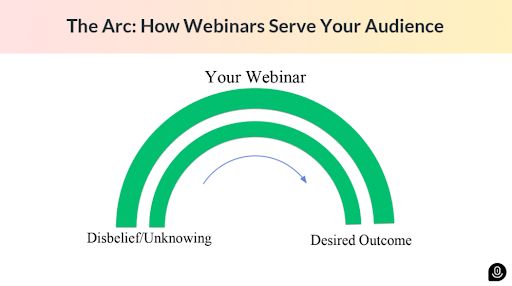Do you want to scale your business? Of course you do! Who doesn’t? One way to increase your income...
Increase Conversions by Making It Easy for Customers to Connect
When B2B buyers are considering a purchase, they spend 27% of their time doing direct research. A study by Gartner shows that most consider buying decisions to be difficult or complex, and rely heavily on product information, comparisons, and other informative data when making decisions.
That research stage can extend anywhere from a few days to several months depending on the complexity, value, and cost of the product. It’s also the ideal time to connect with consumers, build relationships, and show them your brand is backed by real people who care.
A key way to accomplish this is to expand and improve options for customers to reach out to your brand. When potential buyers connect in meaningful ways, you pull them into conversations, engage with them about your product, and, ultimately, convert them.
To help you get started, you need to assess your current communication strategy, optimize your resources, focus on response time, expand your availability, and help customers deepen their knowledge.
Be Available on Social Media
Most people are on social media, but, on average, business decision-makers are even more so. Facebook and Instagram show business decision-makers spend 2.5X as much time as normal users on their platforms. And LinkedIn is built around business decision-makers. Maintaining an active presence on those platforms lets you connect and talk to those audiences where they are.
However, availability also entails answering questions quickly, responding to comments, and connecting with consumers across all your platforms. This consistent and reliable availability requires a social media strategy designed around fast responses, consumer relations, and making time for one-on-one conversations.
Some of those components include:
Limit Social Media Platforms
If you can’t check all your platforms multiple times a day, then you have too many. Business users tend to target Facebook, LinkedIn, and Twitter. Specific B2B vectors, however, find platforms like Instagram and TikTok more advantageous (e.g., if you’re selling to eCommerce). Know why you’re on each platform and what value it delivers your brand.
Aggregate Responses in One Place
Social media management platforms like Hootsuite, Sprout Social, MeetEdgar, FanBooster, Zoho Social, and many others offer this functionality. With these, you import social platforms, then access and respond to chats, comments, and incoming messages from one place. This makes it easier to keep up with incoming conversations so you can reply quicker and with less effort.
Connection is the most important element of social media. If someone messages you online, respond quickly, open a ticket, and keep tabs on them.
With more and more people using social media instead of contacting support directly, it’s imperative to link customer service, sales, and support to social channels so customers can connect in ways that feel comfortable and casual.

(Image: https://unsplash.com/photos/744oGeqpxPQ )
Deliver Exclusive Knowledge With Webinars
Research is the largest part of the B2B buying process. Webinars allow you to deliver in-depth and exclusive information from your brand and partners, with room for live Q&A sessions following the event. This allows you to deliver strong, relevant information, mapped to your sales funnel.
Map Webinars To Your Sales Funnel
Mapping webinar content to your sales funnel is crucial because it impacts how and when prospects see your content. If you can map webinar content to your funnel, incorporate lead qualification as part of the webinar, and connect with those prospects to answer follow-up questions, you’ll go a long way towards converting the customer.
Demand Generation shows:
- 68% of buyers compare more vendors than in previous years.
- 61% of buyers chose vendors because of high-quality content.
- 60% of buyers chose vendors whose content closely matched the sales funnel.
Your webinar strategy has to reflect your sales funnel, leave room to connect with prospects, and provide follow-up information and opportunities to create links.
Help Your Audience Reach Their Desired Outcome
Every webinar must get your audience one step closer to their desired outcome. A webinar serves at every stage of the funnel, but it doesn’t always have to come with a sales pitch as if it’s bottom-funnel content. Sometimes, your webinar can reach your audience just as they’re beginning their journey with your brand, and leave the door open to learn more (for example, by signing up for your newsletter).
The Webinar Arc concept (developed at Demio) focuses on getting your audience from one state to another across the duration of your webinar, and shows you how to put on the most meaningful events that create connections.
For example, at the beginning of your webinar, your audience may be in a disbelief or unknowing state. They don’t know how your product or service helps them reach their ultimate goals, or they don’t think you can help. By the end of your webinar, they might understand how a solution like yours can help them get closer to their goals.

The Webinar Arc moves the focus of the webinar from your company (what are our KPIs?) to your audience (what is their desired outcome?), and uses this shift in perception to make your webinar even more useful to your attendees.
The key here is to approach a webinar, not focusing on how many leads you can get out of the event. Instead, your focus should be to help your registrants and attendees with their own personal motivations and career goals — usually, that involves a continued relationship with your brand.
Offer Meetings and Demos
Nearly every B2B sales funnel relies heavily on demos and free trials. Unfortunately, many of those are buried under lengthy signup forms and funnels. Simplifying the contact process can help you drive more demos, connections, and conversions.
The steps to sign up for a demo often look like this:
- A potential customer reaches out via email, or your contact form.
- Your team replies with more information, and suggests a demo.
- The lead proposes a few time slots.
- Your team confirms and sends the calendar invite.
There are a few ways you can improve efficiency and remove certain steps. For example, offering a calendar link eliminates the back-and-forth of scheduling and allows the lead to find a time that works best for them. You can also provide a link to book a demo in your email signatures so it’s readily visible. Additionally, you can promote your demo signups on your homepage, as a pop-up on your pricing page, as a CTA on a webinar, or on a landing page for your ads.
These actions can trim down signup to just one or two steps, moving the process forward as quickly as possible.
Make Contact Information Easy To Find
Chances are, you already have contacts in your funnel. Many are probably in email lists, on social media, or even engaging with you. It’s important to make the shift from contact to customer as simple as possible.
Ensuring information and contacts are readily available can help your company organize your outreach, deliver more targeted content, and make it easier for your audience to connect with you. Offer phone numbers, emails, live chat, and other straightforward ways to reach you.
Segment Email Lists
Categorize email contacts by specific interest, funnel stage, industry, or other important defining factors. Then, add customized contact information to each email you send out.
For example, if you have someone who isn’t a customer in your email list, you should include contact information for the sales team. However, if someone is a current customer, you may want to include contact information for your customer support team at the end of every email newsletter.
When you add relevant contact information in your outreach, you help subscribers set up calls, meetings, or demos with the right people in your company so they can connect with the best person and move forward in the sales funnel.
Simplify Contact Forms
Test and simplify your contact form. Although it’s important to get data to determine where someone falls in your funnel, no one is going to take the time to fill out 10 fields just to send a simple message. There’s a point where asking for more will reduce conversion, so you’ll need to balance the need to segment lists and your conversion rates.
Add a Human Touch
B2B contacts are accustomed to marketing tactics. What they don’t expect, though, is to have genuine conversations with people who show interest in them, their needs, and their business.
Holding conversations with prospects requires time, but can deliver value even if the prospect doesn’t become a customer. For example, a quick chat with a prospect that ultimately reveals they need a different solution might uncover gaps in your product, or tweaks you need to make to your targeting strategy.
Discussions with your contacts divulge greater insight into their needs, problems, and buying process – all while building relationships and trust that drive conversion.
Getting there requires easy access to you. That means using tools to distribute contact information, allow prospects to get in touch with you, and share information about connections.






Blog comments